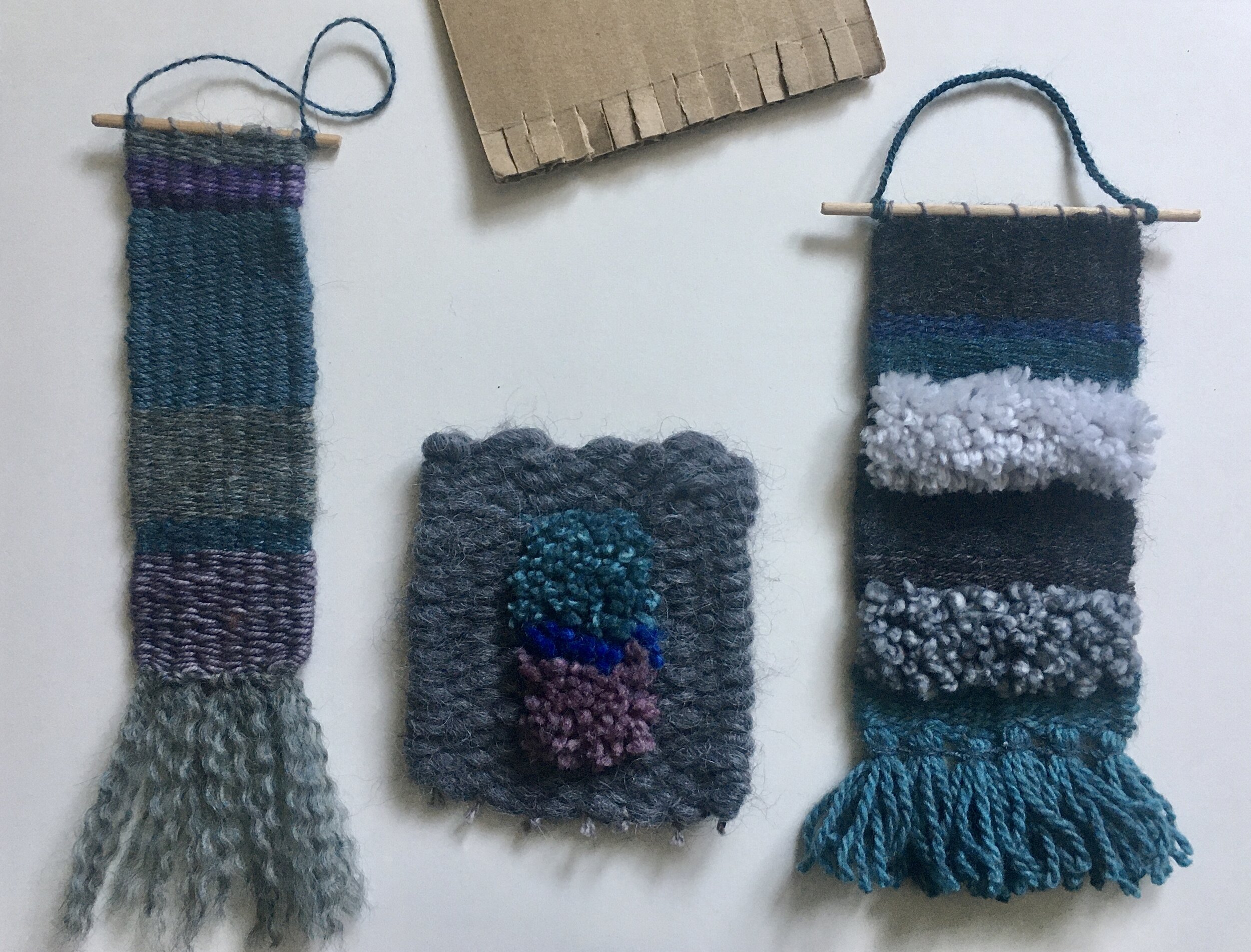Week 12: home / studio / classroom
This is the first week back after two weeks of break, and I’m finally starting to feel myself again after struggling with adjusting to the physical distancing and uncertainty and grief. I’ve been doing some small things that have helped me get excited for getting back into my studio practice (literally). I’ve been making tiny weavings on my hand-sized cardboard loom. A thumb-sized clay sheep. The tiniest kite made of paper and thread (Alyssa Baguss sent me a pattern). They’re not for class but just for me, since making has always been my happy place. It’s me giving myself permission to rest and experience joy in the midst of collective trauma. To take getting back into school and deadlines and heavy intellectual brainwork at a slower pace.
Honestly that brings me to an interesting thought about my studio practice. Making and doing what brings me joy has always been what drives my work. The scope and scale and context are dependent on the resources I have available and the inner work or external concerns that I am interested in speaking to through it. But I follow the joy. And that’s what keeps me making and exploring and seeking. Alyssa talked about doing what makes her happy and following the joy through her studio work the last time I saw her (about a month ago) and it really resonated with me.
The other thing is I know I’ll be able to finish the large-scale work I was making once I have space and access again. I have a lot of little things that relate to my studio practice and research that I’ve wanted to work on but haven’t had time to. I’m grateful to be able to take this time to explore and think about process more as it relates to my current studio work. One of my professors asked us to think about what a studio practice of a working artist looks like out of school, and 90% of the time it’s process. MCAD is very product-focused, which makes sense since it’s easier to quantify feedback from products than process (though this raises the interesting question of how can we as educators teach process while still assessing growth? How can we change this model, since it often causes an excess of stress in students? Food for thought). Anyway, I have some small things I’m excited to work on. Literally–some small handmade paper casting, tiny prints, and steps towards larger works while I work with what I have.



